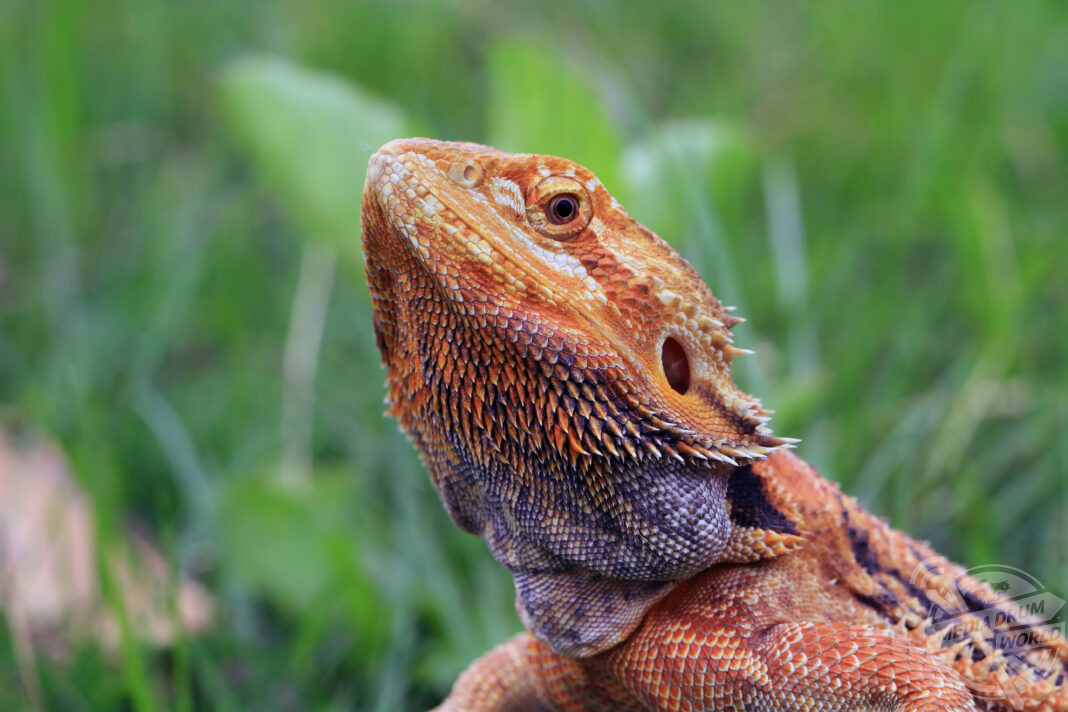When bearded dragons wag their tails, there can be several reasons for this. These can span from hunting, expressing their feelings, when they are keeping their tails dry, wanting to assert themselves, and even nutrition.
Although it is not an everyday thing to see a bearded dragon wiggle its tail, it is something you want to look out for, especially when you know it is trying to tell you something. This post will give you a deeper dive into what this action actually can mean.
4 Reasons why Bearded Dragons wag their Tails
1. Aggressiveness
Generally, bearded dragons aren’t an aggressive species. Upon purchasing your bearded dragon, there are ways to check if it shows signs of aggressiveness.
Bearded dragons often twitch their tails when they are stressed. They will become aggressive if they feel threatened, which can escalate to biting or even scratching. This is why trimming bearded dragon nails is something you cannot be lazy about. One reason a bearded dragon shows its foul mood by twitching its tail is due to a change in the environment. This can usually lead to the bearded dragon becoming aggressive.
When it comes to a change in the environment, this can have a significant impact that is not positive on the bearded dragon. The faster the change is, the more impact it will have, leading to more drastic aggressive behaviors. Sometimes, a bearded dragon may also show aggression by moving its head up and down. Either independently or at other bearded dragons, this behavior can be a way to show aggression. If you notice them trying to bite or scratch you, it is suggested that you wear a pair of gloves.
2. Feeding Time
When feeding, a bearded dragon will stick its tail up while feeding. Out in the wild, bearded dragons know that there are vulnerabilities, so they stick their tail up.
You might be asking, “why do bearded dragons wiggle their tails when eating?” Having their tail up means predators cannot get to them so easily. The truth is, there can be tons of reasons why bearded dragons shake their tails.
When they are younger, this is a way to show they are having a great time when they are eating. When the bearded dragon has their food, they also stretch out their necks, and their body moves in many ways. Bearded dragons enjoy eating, so using their tail to display this is something that they can express.
3. Keeping its Tail Dry
A bearded dragon might also keep its tail up just to avoid dirtying it. You will see that when it comes to bathing a bearded dragon, it will lift its tail up. Actually, could he be lifting his tail to express his happiness to shower? Or is it because he has OCD? Well, no one really knows, unless you are a bearded dragon!
Younger bearded dragons tend to behave like this. However, older dragons might sometime do this too. When washing your dragon, there should be a lamp in the tank. If there is a lamp, then this means that they can keep the bearded dragon dry and warm, and their space will be like this also. Don’t put too much water into the bathtub because it could harm the bearded dragon.
If you have done everything right to ensure a comfortable bathing session, your bearded dragon might just raise its tail at you as a sign of approval!
4. Health Issues
The final reason why bearded dragons wiggle their tails is that it could be a sign of calcium deficiency. This could end up being a more serious problem known as a metabolic bone disease if you don’t pay attention to it early. Giving the bearded dragon a great diet with greens is one way to prevent this issue.
Insects and treats are also a main in their diet but to give them the healthiest bones, eating greens a is the best choice. There are other ways for your bearded dragon to have complete health, and the calcium powders can be the best start. Every bearded dragon needs something that suits their diet, and with the range of calcium powders out there, you can choose the one that is right for the Bearded Dragon.
There you have it! The next time you see your bearded dragon wiggling its tail, remind yourself of these 4 reasons so that you can better assess the mood and condition of your little friend, depending on the situation.









